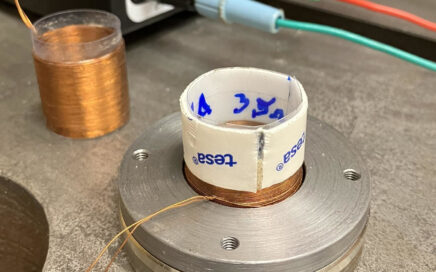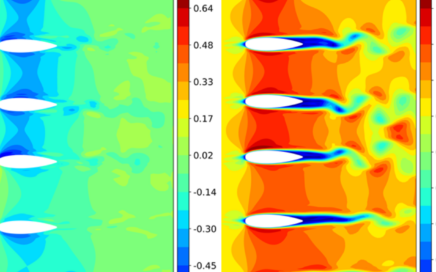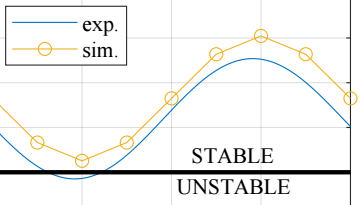Funding provider: Czech Science Foundation (GAČR)
Grant ID: GA24-12144S
Project objectives: At peak renewable energy production, it is necessary to operate steam turbines in modes outside the optimal design load. Modern steam turbines therefore have to operate under variable loading, which can lead to serious aeroelastic stability problems. Lower mass flow ratio results in a redistribution of the pressure field along the blades and the formation of spatial flow structures with a pronounced radial component. The main objective is therefore to experimentally and numerically investigate the effect of a 3D flow field with a radial flow component on aeroelastic stability and a formation of "stall flutter" for lower turbine blade loadings. Another important objective will be the development of a new aero-elastic model based on a neural network. This new model will be able to simulate extremely fast blade-fluid interaction problems while maintaining a complexity of the problem. The research will contribute significantly to a more accurate description of the effect of the 3D flow field on blade stability and to safer blade design for a wide range of loadining conditions.
Principal investigator: Ing. Luděk Pešek, CSc.
Project recipient: Institute of Thermomechanics of the CAS
Other project participant: University of West Bohemia, Faculty of Applied Sciences

Schematic of the project interdisciplinarity
Project news

Progress report: Design of wind tunnel upgrades – bypass to introduce a radial flow component
In order to achieve the project objectives, the wind tunnel will need to be upgraded to create a complex 3D…

Progress report: Design of a composite blade, suspension and excitation system
Another test carried out on the blade was a single airfoil aerodynamic test in the wind tunnel. The blade was…

Progress report: Development and validation of the in-house FSI solver
During the first year of the grant, a 2D computational fluid-structure interaction (FSI) model was developed to investigate aeroelastic stability…

Progress report: Phenomenological aeroelastic model– resonance phenomena and stability
An improved aeroelastic model consisting of a single profile exposed to an airflow of velocity U was developed, as shown…
